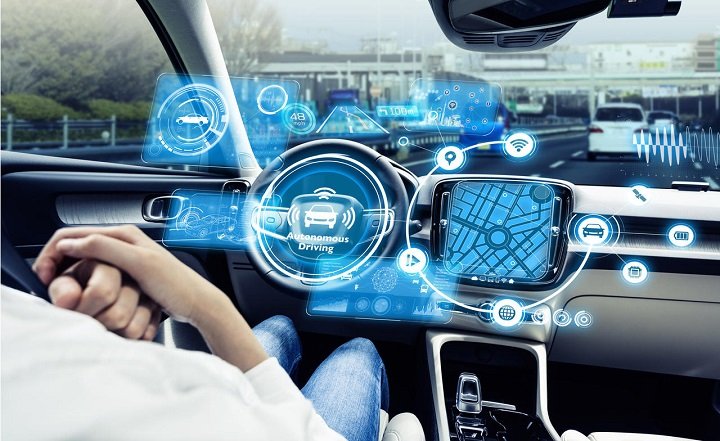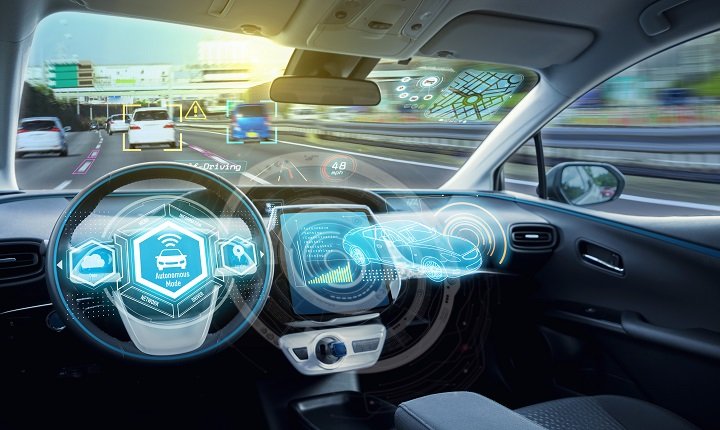
Autonomous driving regulations independent driving, or self-driving cars, has been a point of intrigued for numerous a long time. With the advancement of unused innovations, we are getting closer to a future where cars can drive themselves. But for this to happen securely, governments and organizations require to put in put rules and laws. These are known as independent driving controls. These rules offer assistance make beyond any doubt that self-driving cars are secure for individuals to utilize, and they moreover direct companies that construct and test these vehicles. In this web journal post, we’ll break down everything you require to know approximately independent driving directions in a basic way, counting how they work, why they are critical, and what the future might hold.
What Are Independent Autonomous driving regulations?

Autonomous driving controls are rules set by governments and other organizations to make beyond any doubt that self-driving cars work securely. Since these cars depend on innovation like sensors, cameras, and fake insights (AI) to explore the streets, it’s imperative that there are strict guidelines in put. These directions cover different perspectives such as testing, security, and indeed how these cars ought to connected with other vehicles and pedestrians.
This implies that directions are continually advancing. A few nations are more progressed in setting up these laws, whereas others are fair getting begun. The objective is to guarantee that when independent cars ended up common, they will not cause mishaps or put individuals in danger.
The Diverse Levels of Independent Driving
Before we plunge more profound into the directions, it’s critical to get it the diverse levels of independent driving. These levels, characterized by the Society of Car Engineers (SAE), offer assistance us get it how “autonomous” a car truly is:
- Level 0 (No Computerization): The driver controls everything, and the car does not offer assistance at all.
- Level 1 (Driver Help): The car can offer assistance with errands like directing or speeding up, but the driver is still in charge.
- Level 2 (Fractional Robotization): The car can take over a few capacities like directing and speeding up together, but the driver must still screen the road.
- Level 3 (Conditional Robotization): The car can drive itself in certain circumstances, but the driver must be prepared to take over if needed.
- Level 4 (Tall Robotization): The car can handle most driving errands on its possess, but it may still require a driver for a few situations.
- Level 5 (Full Computerization): The car can drive itself totally without any human intervention.
Most of the cars we see nowadays are at Level 2 or underneath. But companies like Tesla, Google’s Waymo, and others are working difficult to bring Level 4 and Level 5 cars to the roads.
Why Do We Require Independent Driving Regulations?
Self-driving cars have the potential to decrease mischances caused by human blunder. Agreeing to the National Interstate Activity Security Organization (NHTSA), human botches are dependable for 94% of genuine crashes. If independent vehicles can drive more securely than people, it may spare numerous lives. In any case, the innovation is still unused, and we can’t be certain that it will work impeccably in all circumstances. This is why we require regulations.
Regulations guarantee that:
Safety is a need: Self-driving cars must pass strict tests some time recently they are permitted on the streets. This makes beyond any doubt they won’t hurt drivers, travelers, or pedestrians.
- Accountability is clear: In case something goes off-base, there must be clear rules approximately who is mindful. Is it the company that made the car, the computer program engineer, or the individual in the car? Directions offer assistance clarify this.
- Innovation is empowered: By making a set of rules, governments can offer assistance companies enhance inside a secure system. This can energize more companies to create independent innovation since they know what’s expected.
Key Directions Around the World of Autonomous driving regulations
Let’s see at how diverse nations are drawing closer independent driving regulations:
1. Joined together States
The U.S. is one of the pioneers in independent vehicle innovation, but directions shift by state. A few states, like California and Arizona, have more progressed rules, permitting companies to test self-driving cars on open streets. The National Interstate Activity Security Organization (NHTSA) plays a major part in setting security benchmarks for these vehicles. In 2017, the NHTSA discharged deliberate rules for self-driving cars, empowering companies to share their security methodologies. In any case, there is still no government law that completely covers independent vehicles over all states.
2. European Union
The European Union (EU) has too been dynamic in creating independent driving directions. The European Commission discharged a system for independent vehicles, centering on security, information sharing, and obligation. Germany, in specific, passed a law in 2021 that permits Level 4 independent vehicles to work on open streets beneath particular conditions.
3. China of Autonomous driving regulations
China is pushing to ended up a worldwide pioneer in independent driving innovation. The nation has built up different testing zones for self-driving cars, and cities like Beijing and Shanghai have issued grants for independent vehicle testing. The government has too set targets for having a huge armada of self-driving cars by 2025.
4. Japan
Japan’s directions center on permitting independent vehicles in particular zones. The nation passed a law in 2020 allowing Level 3 independent vehicles on open streets, making it one of the to begin with countries to do so. Japan’s government is too working closely with companies like Toyota and Honda to create the innovation further.
Challenges in Independent Driving Regulations
While there has been noteworthy advance in independent driving directions, there are still numerous challenges that require to be tended to. A few of these include:
- Technology Restrictions: Independent cars depend on sensors and AI to make choices. In any case, these frameworks are not idealize. For illustration, self-driving cars might battle in terrible climate conditions like overwhelming rain or snow, which can square sensors.
- Ethical Questions: One of the greatest wrangles about around independent driving is how a car ought to carry on in life-or-death circumstances. For occasion, if an mischance is unavoidable, ought to the car secure its travelers at all costs, or ought to it prioritize the security of pedestrians?
- Legal Issues: As specified prior, there is a parcel of instability approximately who is mindful when an independent vehicle causes an mischance. Ought to it be the producer, the program designer, or the proprietor of the car? Distinctive nations are still working on finding clear answers to these questions.
- Public Acknowledgment: Numerous individuals are still uncertain approximately trusting self-driving cars. It will take time for the open to feel comfortable sharing the street with independent vehicles.
The Future of Independent Autonomous driving regulations

The future of independent driving directions is shinning, but it will require continuous collaboration between governments, companies, and the open. As the innovation makes strides, so as well will the controls. In the coming a long time, we can expect:
- Stricter security guidelines: Governments will likely present more nitty gritty rules almost how independent cars ought to carry on in complex situations.
- Better open instruction: As independent cars gotten to be more common, governments and companies will require to teach the open on how to connected with these vehicles on the road.
- Global participation: Since cars can travel over borders, there will require to be universal assertions on how independent cars ought to work. Nations might work together to make worldwide benchmarks for self-driving cars.
Conclusion
Autonomous driving controls are key to guaranteeing that self-driving cars are secure for everybody. As innovation proceeds to progress, we will see more progressed controls that not as it were advance development but too keep individuals secure on the streets. Whereas there are still challenges to overcome, the advance made so distant is promising. Governments, companies, and citizens all have a part to play in forming the future of independent driving.
For more data on the most recent improvements in independent vehicle innovation, visit the National Interstate Activity Security Organization (NHTSA). Moreover, the European Commission gives important bits of knowledge into the controls in the EU.
FAQs:
1. What are independent driving regulations?
Autonomous driving directions are rules and laws put in put by governments and organizations to guarantee that self-driving cars work securely. These controls cover testing, security, responsibility, and how independent vehicles connected with other vehicles and pedestrians.
2. Why do we require controls for self-driving cars?
Regulations are basic to guarantee that independent vehicles are secure for open utilize. They offer assistance diminish mishaps, clarify who is capable in case of an mishap, and energize advancement inside a secure system. As self-driving cars utilize complex innovation, these rules guarantee everything works easily some time recently they hit the road.
3. What are the distinctive levels of independent driving?
The six levels of independent driving, as characterized by the Society of Car Engineers (SAE), are:
1 Level : Driver help – the car can help with errands like directing or acceleration.
2 Level : Halfway robotization – the car handles a few assignments, but the driver still screens the road.
3 Level : Conditional computerization – the car can drive itself in particular circumstances, but the driver must be prepared to take over.
4 Level : Tall computerization – the car can drive itself in most circumstances but may require human control in certain conditions.
5 Level : Full mechanization – the car can drive itself completely without any human intervention.
4. Which nations have the most progressed independent driving regulations?
Countries like the Joined together States, Germany, China, and Japan are driving the way in creating controls for independent vehicles. The U.S. and China have dynamic testing zones for self-driving cars, whereas Germany and Japan have laws allowing higher levels of mechanization on open streets.